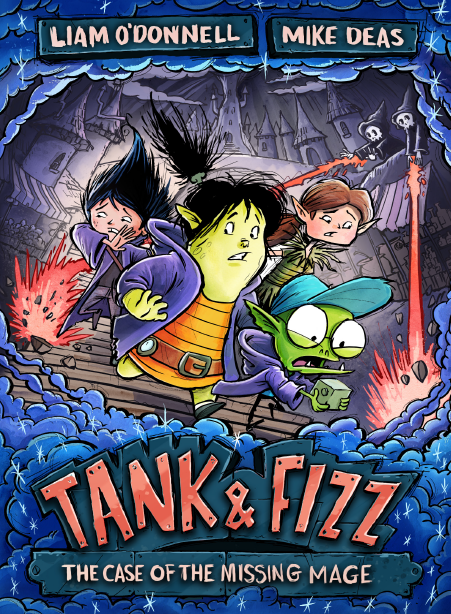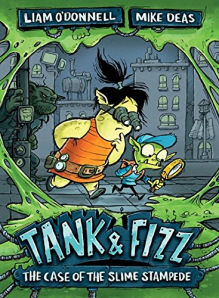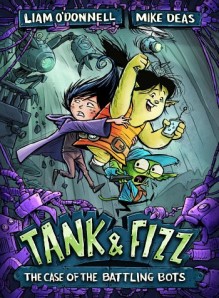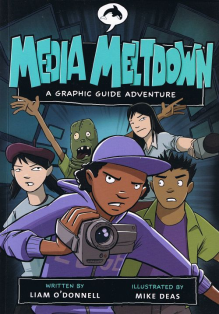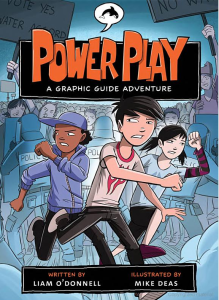The game you play is the war you win. And when 2.5 million people download a game that pushes your agenda, you know youre winning. Americas Army is a hugely popular military MMORPG offered free to gamers. Its getting good reviews and the game creators are very happy. They should be, theyre the US Army. Americas Army is blurring the lines between military games and military training. Its also helping make the armed forces a brand as ubiquitous as Coke or Nike.
Yesterday, Tony at Clickable Culture posted this bit of info on the US Militarys game plan and that got me thinking about the talk I went to last Sunday . . .

Last week, Ed Halter gave a talk called Wargames: Digital Gaming and the US Military, at the Images Festival, in Toronto. Speaking to a mixed group of curious gamers, geeks and academics, Halter laid down the history of gaming and the military and spoke to the increasingly intimate relationship between video game makers and the army.
From Halters past articles on the subject its clear that the US Military is seeking to reposition itself in the brandscape. Their goal: Army Everywhere. They seek to become just another logo to wear and war just another product to sell.
Games as military training tools have been around in fiction and fact for many years. What is troubling to me as a general pacifist, but avid gamer, is the geek realism in the games and the feigned independence game companies put forward.

Although its being simultaneously released as both a military training tool and a video game, Pandemic Studios, the makers of the much-anticipated Full Spectrum Warrior deny that they are encouraging gamers to become soldiers. But how do they explain the link the GoArmy website from the games intro screen? They dont, really. And after a few intense game sessions, Im sure many gamers wont care as they one-click-it to the armys recruiting website and check out how to sign up to become a real Full Spectrum Warrior (but without the full spectrum death it so often involves.)
Dont take it from me, read the pro-army blurb on the FSW site:
Interested in learning more?
The Go Army website has tons of information about modern combat techniques and strategies, and offers an in-depth look at what its like to serve as a Full Spectrum Warrior.
When does the game stop and the promotion begin?
Like any gamer, I drool over the new advances in graphics and realism in the latest games. I too long for the day when I can run around my neighbourhood blasting AR monsters that only I can see. But along with new immersive technology comes a geek realism that is creating a dark side to gaming.
One of the main attractions to games like FSW or Americas Army, is that players are bound by the actual Rules of Engagement. Shoot into a market full of villagers and its game over. The guns you shoot are realistic too, right down to the shell casings they spit out when fired.
Through this realism, however, a fantasy of forbidden images creeps in (to use Halters term.) Scenes from Americas Army are modelled after actual photographs from Afghanistan and Gulf War I. Images of pitched bloody battles that hungry gun-lovin, news junkies couldnt get during the actual wars are recreated on their computer monitor, reducing the actual events to commodities to be downloaded, played and shared. Capitalism at its best.
Reproductions of old wars are great, but taking out the Taliban and liberating Kuwait is old news. I want uprisings, insurgents, Baath loyalists! And thanks to the good people at Kumawar.com, I can be up to my Fallujah in angry Iraqis within days of the actual uprising.
Kumawar is the next inevitable step in the march toward complete geek realism. Its a subscription service that builds video game scenarios out of actual recent military incidents and offers them for download on their site. Want to kill Uday and Qusay for yourself? Defend a Fallujah police station? Foil a Samarra bank heist? Just log on, download and recreate the events, as their ad says: the way they should have happened.
Like the shortening timespan between many technical advancements, the time between events and their pixelated recreations will continue to decrease. In future wars there will be no delay and it wont feel like a game. Geek Realists will get their kicks as Embedded Soldiers, riding shotgun with a willing infantryman as the army invades new countries (thus creating more content/product.) With a mouse in one hand and a jumbo bottle of Coke in the other, gamers will watch soldiers fight pitched battles with pesky Iranian insurgents or Syrian thugs. No retreat, no surrender and no time delay. Bring it on.
Dark times for pacifists or those who just think selling war aint right? Dont raise the white flag yet. The US Army may have their game on, but so do their opponents.
Part Two will look at efforts to jam the war and bring sanity back to our video games.


